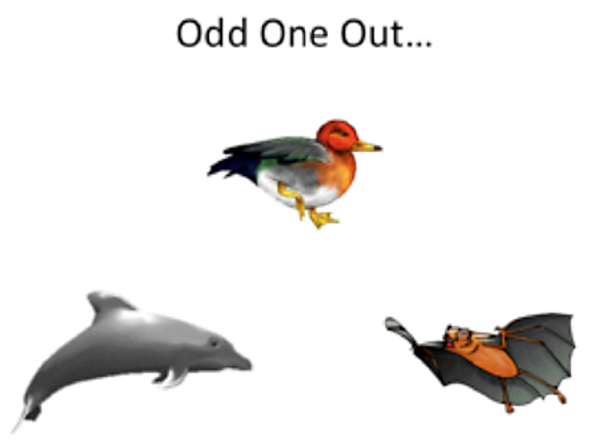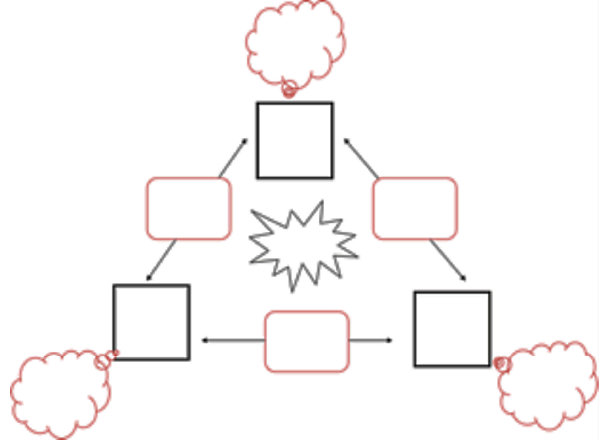
Having the right tools for your inquiry not only makes the process more manageable but also makes sharing what you are doing with other people easier. The tools we found to be very powerful in our work in the North East Schools Based Research Consortium were designed to promote thinking skills by making the way in which students were thinking more explicit. It quickly became apparent that the impact of these strategies on students also affected the teachers’ thinking and stimulated professional inquiry; teaching thinking resulted in thinking about teaching. Initially the tools we used were strategies developed within programmes for critical thinking, which we adapted so that they could be infused into the teaching of subjects in the school curriculum. We also took generic strategies for promoting understanding from wherever we could find them and by working collaboratively we tested them out in the classroom then adapted and refined them. For example, the Fortune Line described in the first “How To…’ piece was based on ideas from a book on probing understanding (White and Gunstone, 1998) and the authors themselves acknowledge that they got the original idea from someone else. This eclectic approach to gathering techniques to use in the classroom is characteristic of teachers who are always on the “look out” for a good idea and we don’t apologise for casting our net wide but at the same time it is important to have a clear rationale for selecting and using specific tools and to be rigorous in assessing their value.
Example of an inquiry tool
As the collaboration developed we began to devise our own strategies such as the “Odd-one-Out”, which owes something to a popular TV show at the time and also to the psychologist George Kelly’s work on repertory grids, and their use to support teacher inquiry as well as student inquiry was incorporated.
Odd-One-Out
Odd-One-Out is a strategy that supports classification and understanding of the properties and defining attributes of things by asking students to identify a similarity that distinguishes two items from a third, thus making this the odd-one-out. The rationale for the strategy draws upon work in psychology on personal construct theory where triads of statements are used to elicit a person’s concepts or ‘constructs’ (Kelly, 1955). It also has the features of a game, which can help to motivate students but there is a seriousness of intent. Planning which three pictures, words or numbers to present in the exercise takes considerable care on the part of the teacher to ensure that the activity has sufficient breadth to enable everyone to make a suggestion whilst having the depth to further productive learning. The example below was developed by a primary school teacher to use with her class of seven year old children as the introduction to a series of lessons on animal habitats. The exercise accommodates a range of possible responses and, in the first instance, all responses are welcome provided that a robust justification can be given. For example, it could be that the duck is the odd one out because it lives on water and on land but equally the dolphin could be the odd one out because it hasn’t got any legs and so on. Initially it is important to encourage participation and the responses provide useful information as to what the children are interested in and what they might already know. Gradually, the teacher guides the class towards thinking about those similarities and differences that will lead to a discussion of the concept of an animal’s habitat. However, developing flexibility in thinking and becoming aware of how your frame of reference influences how you might classify the same thing in different ways is also important.

The activity can be supported by the use of a template such as the one below, this enables the students to structure and record their responses and might be used after a whole class interactive session. The students can record the different ways in which each of the animals could be the odd-one-out by completing the ‘cloud’ boxes and show similarities in the rectangular boxes with the arrows. The star burst in the middle can be used to identify what they all have in common.

Teachers working with this template have developed it as a student learning tool and also diagnostically as a means of eliciting students’ current thinking so that they can adapt subsequent teaching accordingly, it can also be used to gather data over time on the conceptual development of students. If the template is completed at the beginning of a unit of work, or a particular pedagogical intervention, and again in the middle and at the end, it becomes a tool for gathering evidence that can be analysed to show impact and shared with a wider audience.
Professional learning task: Creating tools for inquiry
List the games or similar activities that you (or your colleagues) are already using to support student learning and consider how they could be adapted to become tools for teacher inquiry.